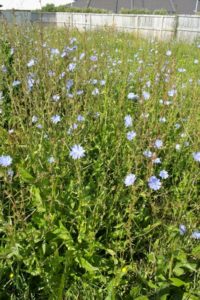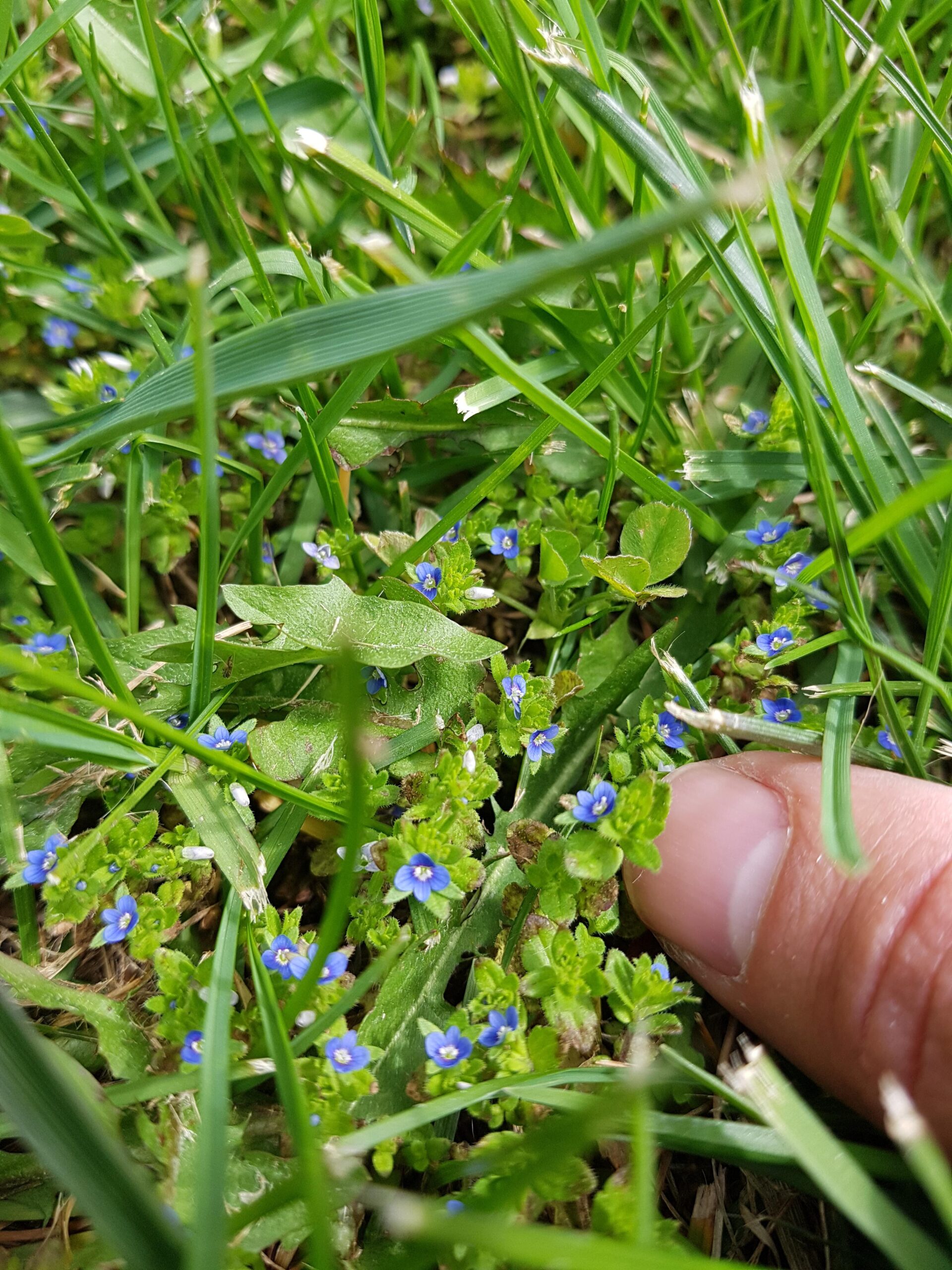As an Amazon Associate, I earn from qualifying purchases.
Weeds with blue flowers include common species like chicory, blueweed, and cornflower. These weeds add unexpected beauty to gardens and fields.
Weeds with blue flowers can be both a gardener’s nuisance and a surprising source of beauty. Blue flowering weeds like chicory, blueweed, and cornflower often grow in gardens, fields, and along roadsides. Their vibrant blue petals stand out, making them easily recognizable and sometimes even welcome despite their invasive nature.
Understanding these weeds can help gardeners manage their growth effectively. Some gardeners may choose to incorporate these blue-flowered weeds into their landscapes for their aesthetic appeal. Knowing how to identify and control these weeds is essential for maintaining a balanced garden.
Introduction To Blue-flowering Weeds
Blue-flowering weeds can be surprising. They bring unexpected beauty to gardens. These weeds often go unnoticed. Many people confuse them with garden flowers. Their blue petals can be stunning. They add a splash of color to green spaces.
Unexpected Beauty
Blue flowers can be captivating. They can transform a dull garden. Not all weeds are unwanted. Some can be quite attractive. Blue flowers often stand out. Their color is rare in nature. This makes them special.
Common Misconceptions
Many think all weeds are bad. This is not true. Some blue-flowering weeds are beneficial. They can attract bees and butterflies. These insects help with pollination. Not all weeds are harmful. Some can add value to your garden.
Types Of Blue-flowering Weeds
Chicory is a common weed with bright blue flowers. It blooms in the summer and fall. The flowers open in the morning and close by noon. Chicory grows along roadsides and in fields. Its roots can be used to make coffee. The leaves are edible and can be added to salads. Chicory plants can grow up to three feet tall.
Cornflower, also known as bachelor’s button, has vivid blue petals. It is often found in meadows and gardens. Cornflower blooms from late spring to early autumn. This weed attracts bees and butterflies. The flowers are sometimes used in herbal teas. Cornflower can grow up to 30 inches tall.
Habitat And Growth Conditions
Weeds with blue flowers thrive in sunny locations with well-drained soil. They adapt to various conditions, often found in gardens and fields. Regular watering supports their vibrant blooms.
Preferred Environments
Weeds with blue flowers thrive in sunny areas. They can also grow in partially shaded regions. These weeds are often found in meadows, gardens, and fields.
They can survive in urban areas too. These plants are adaptable and hardy. This makes them common in many places.
Soil And Climate
These weeds prefer well-drained soil. They can grow in sandy, loamy, or clay soils. The soil should be neutral to slightly acidic.
The ideal climate for these weeds is temperate. They can also thrive in subtropical regions. They are resilient to drought and frost.
Ecological Benefits
Blue flower weeds can attract many pollinators. Bees, butterflies, and other insects love these flowers. They come to collect nectar and pollen. This helps in pollination of other plants too. A garden with blue flowers is buzzing with life. They support a healthy ecosystem.
Blue flower weeds can improve soil health. Their roots go deep into the ground. They break up hard soil and add nutrients. When these plants die, they leave behind organic matter. This helps other plants grow better. They also prevent soil erosion. Their roots hold the soil together.
Gardening With Blue Weeds
Blue weeds can add a splash of color to your garden. These weeds are often easy to grow. They require minimal care and can thrive in various conditions. Blue flowers can attract pollinators like bees and butterflies. They can also create a calming and serene atmosphere. It’s important to choose the right type of blue weed for your garden. Some popular choices are Chicory, Blue Mustard, and Bluebells. Make sure to control their growth to avoid them overtaking your garden.
Companion planting involves growing different plants together. Blue weeds can benefit other plants in your garden. They can act as natural pest repellents. Blue flowers can also improve soil health by fixing nitrogen. This can help your vegetables and other plants grow better. Some good companion plants for blue weeds include tomatoes, lettuce, and carrots. Always monitor your garden to ensure a healthy balance.
Medicinal Uses
Weeds with blue flowers often offer surprising medicinal benefits. They can soothe inflammation and aid in wound healing. Some of these plants also possess antioxidant properties.
Traditional Remedies
Many weeds with blue flowers have been used in traditional remedies. These plants often have anti-inflammatory properties. They can help reduce pain and swelling. Some of these weeds are also antioxidants. This helps in fighting harmful free radicals in the body.
Blue-flowered weeds are also known for their antimicrobial benefits. They can help in treating infections. Many cultures have used these plants in herbal teas. The teas are believed to boost immune health. These traditional uses highlight the importance of these plants in folk medicine.
Modern Applications
Today, the medicinal uses of blue-flowered weeds have expanded. Scientists are studying these plants for new drugs. Many of these weeds have essential oils. These oils are used in aromatherapy and cosmetics. They can help in relaxation and skin care.
Some blue-flowered weeds are also used in dietary supplements. They provide vitamins and minerals. This makes them beneficial for overall health. These modern applications show the ongoing relevance of these plants in medicine.
Identifying Blue Weeds
Blue weeds have unique leaves. Leaves can be smooth or hairy. Some leaves are narrow, others are broad. Flowers are usually bright blue. Flowers may have five petals. Petals can be round or pointed.
Blue weeds change with seasons. In spring, they start to grow. During summer, they bloom. Fall brings seed dispersal. In winter, they die back.

Management And Control
Keep your garden healthy to avoid weeds. Use mulch to cover the soil. This stops weed seeds from growing. Regularly check your garden for weeds. Pull them out early before they spread. Plant ground cover to fill empty spots. This stops weeds from taking over. Rotate crops each year to confuse weeds. Use weed-free soil and compost.
Wear gloves to protect your hands. Use a trowel to dig out weeds. Make sure to get the roots. For large areas, use a hoe. Try using boiling water to kill weeds. Pour it directly on the weed. Use vinegar as a natural weed killer. Spray it on the leaves. Be careful not to harm other plants.

Frequently Asked Questions
What Are Common Weeds With Blue Flowers?
Common weeds with blue flowers include Blue Toadflax, Blueweed, and Creeping Bellflower. These plants often grow in gardens, lawns, and wild areas. They can spread quickly and are hard to control.
How To Identify Blue-flowering Weeds?
Identify blue-flowering weeds by their unique blue petals and growth patterns. Look for distinct leaf shapes and sizes. Some may have thorns or hairy stems.
Are Blue-flowered Weeds Harmful To Gardens?
Yes, blue-flowered weeds can be harmful. They compete with garden plants for nutrients and water. This can stunt the growth of your desired plants.
How To Remove Blue-flowering Weeds?
Remove blue-flowering weeds by hand-pulling, using weed killers, or mulching. Ensure to remove the roots to prevent regrowth. Regular maintenance is key.
Conclusion
Discovering weeds with blue flowers can add a surprising touch to your garden. These unique blooms bring unexpected beauty. Proper identification and management ensure your garden thrives. Embrace the natural charm these blue-flowered weeds offer. Keep exploring and maintaining your green space for a vibrant and healthy garden environment.

